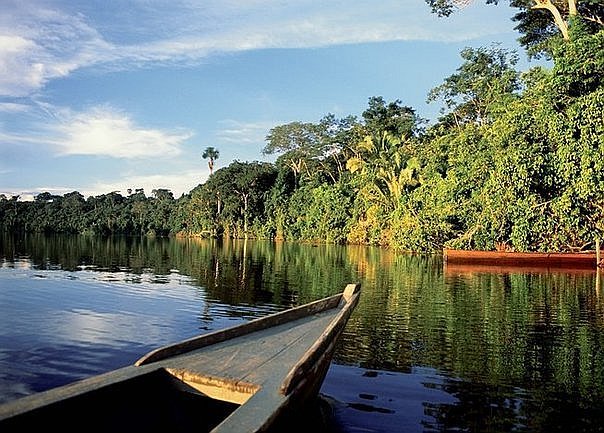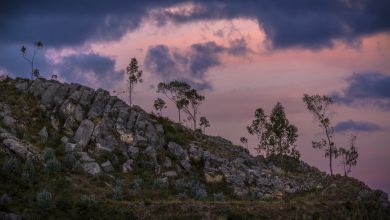National Parks Challenged Here and There

To whom does the land in a country belong? Does it belong to businesses, individuals or does it belong to communities? Is it what makes a country? Is it the prerogative of government to determine its use? Or is it the birthright of the unborn, that they may enjoy an untouched piece of earth? What are appropriate uses for the land?
These were questions that came to mind this week as I saw the local Google Doodle of August 25th, 2016. The Doodle was dedicated to the National Park Service of the United States that was celebrating 100 years since its inception. In the 44 years before the National Park Servers donned their brown uniforms and distinctive hats, the United States Army had the job of controlling access to park lands.
There are now national parks in many, if not most, countries, but the first National Park in the world was Yellowstone National Park, designated in 1872, just two years after its exploration and not long after the ink was dry on John Westley Powell’s report of his exploration of the Grand Canyon in 1869 that later was declared a national park. This land was rich in resources and beauty.

Some only see beauty in gold, however. The land under Yellowstone harbored the promise of the yellow stone that man has sought for years: gold. The mining city of Kirwin was established within the boundaries of the park in 1885, after the area was declared a National Park. Kirwin was abandoned, however, because the gold vein was not as massive as the winter storms of Wyoming.
Gold mining and national parks do not make good partners. Roads must be built, and the beauty of nature is destroyed by the diversion of rivers for sluices, the use of mercury kills wildlife and roads cut across and erode the country.

These very same problems are raising their heads in Manu National Park, in Peru. There are questions of rights to the land, to the water and to the future of the area. Manu is a rich treasure, not only for Peru, but for the world. “For reptiles and amphibians, Manu and its buffer zone now stands out as the most diverse protected area anywhere,” said study coauthor Rudolf von May, a postdoctoral researcher in UC Berkeley’s Museum of Vertebrate Zoology”

In the United States, the indigenous people were driven from the park to meet the requirement that no humans were allowed to live within the borders of the park. What would a national park be if there were a McDonalds or Kentucky Fried Chicken behind each tree?
That is a question that also haunts Manu. The Matsigenka have lived within the boundaries of the park for ages before the establishment of the area as a National Park by governments of which they have no understanding or contact. What are their rights to land, to community, to hunting and farming as they have for ages past the history of what is now Peru? They are considered ‘uncontacted’, however some wear clothing traded from the outside, like shorts, t-shirts or shoes and scarves.
John Terborgh, and ecologist trained at Duke University believes that the people have no place in the park. “Do I think there ought to be permanent settlements inside national parks?” he asks. “No. In this respect the U.S. model is a good one I am happy to endorse. Would you like to have farms and villages in Yellowstone or the Great Smoky Mountains?” He does not go so far as to endorse their involuntary removal.
Others see the Matsigenka and the Mashco Piro as the forward guard against illegal mining and logging. They are more intimately acquainted with the jungle and better able to patrol it.
Sometimes it is not just what is in the borders of the park that affects the quality of life within the park. Just outside of Yellowstone, mining operations were considered that would have destroyed the headwaters of Yellowstone River, wreaking havoc on the park.
“The mine was proposed by Crown Butte Mines, a Canadian concern, called the New World Mine for its location in the New World Mining District that dates to 1864 when prospectors started exploring the area.” Concern for potential pollution entering the park and incited the United Nations to place Yellowstone on its list of “In Danger” World Heritage Sites.
Similar concerns are facing Manu Park in Peru. There are problems with ilegal miners and the waste and pollution of mercury. The pressures of earning money and potentially striking a rich claim weighs heavy on the hearts of the men who brave the dangers of the park. Mostly they do not see the danger in which they place the land, and its inhabitants, both human and animal.

Resolution to the mining problem did not come easily to Yellowstone. While the corporation, Crown Butte Mines, was persuaded to find other areas for mining, it was Margaret Reeb, a retired schoolteacher from Livingston, Montana, who owned most of the mineral rights in the area. She refused to sell those rights to the government.
When Ms. Reeb passed away in 2005, her estate passed on to her nephews, Mike and Randy Holland. They worked with the Trust for Public Lands to bring all of their aunt’s mining claims into public ownership.
“Mary Erickson, Forest Supervisor for the Gallatin and Custer National Forests, said the acquisition of these critical private lands will help conserve watersheds and Yellowstone cutthroat trout, key habitat for grizzly bear, elk and moose and other species, provide public access and recreation opportunities near Cooke City, and offer a viable option to resale and development.”
The land will not be mined for gold, but developed for housing and recreational areas. It is not clear if this will prove a viable option for local wildlife, as none were available for comment.
https://en.wikipedia.org/wiki/Leopold_Report
http://www.nationalgeographic.com/magazine/2016/06/manu-peru-biodiversity-national-parks/
http://news.berkeley.edu/2014/02/18/manu-national-park-in-peru-sets-new-biodiversity-record/
http://www.popsci.com/does-gop-want-eliminate-national-parks
https://www.google.com/doodles/celebrating-us-national-parks




